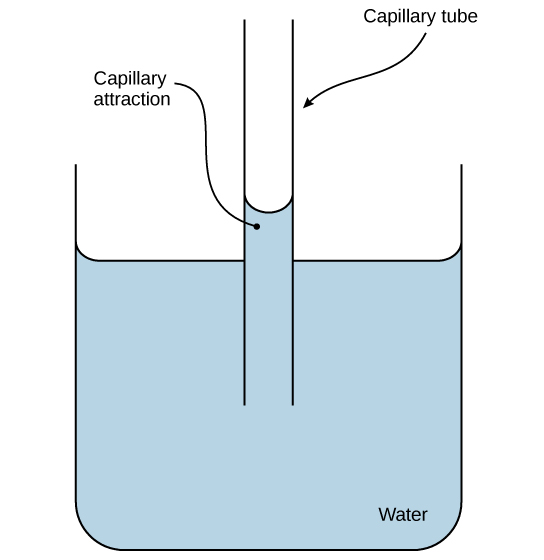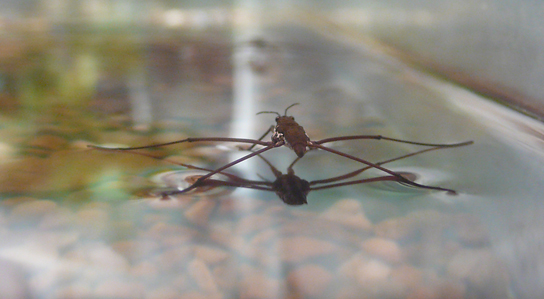| << Chapter < Page | Chapter >> Page > |
These cohesive forces are related to water’s property of adhesion , or the attraction between water molecules and other molecules. This attraction is sometimes stronger than water’s cohesive forces, especially when the water is exposed to charged surfaces such as those found on the inside of thin glass tubes known as capillary tubes. Adhesion is observed when water “climbs” up the tube placed in a glass of water: notice that the water appears to be higher on the sides of the tube than in the middle. This is because the water molecules are attracted to the charged glass walls of the capillary more than they are to each other and therefore adhere to it. This type of adhesion is called capillary action , and is illustrated in [link] .

Why are cohesive and adhesive forces important for life? Cohesive and adhesive forces are important for the transport of water from the roots to the leaves in plants. These forces create a “pull” on the water column. This pull results from the tendency of water molecules being evaporated on the surface of the plant to stay connected to water molecules below them, and so they are pulled along. Plants use this natural phenomenon to help transport water from their roots to their leaves. Without these properties of water, plants would be unable to receive the water and the dissolved minerals they require. In another example, insects such as the water strider, shown in [link] , use the surface tension of water to stay afloat on the surface layer of water and even mate there.

If you are still having some difficulty with these concepts check out the following video links and web links on the properties of water
The underlying basis of hydrogen bonding is:
e
An ion dissolved in water is surrounded by a shell of water in which all of the water molecules orient their hydrogen atoms toward the ion; therefore, the ion is an anion.
a
What type of bonds must be broken for water to vaporize?
b

Notification Switch
Would you like to follow the 'Chemistry of life: bis2a modules 2.0 to 2.3 (including appendix i and ii)' conversation and receive update notifications?